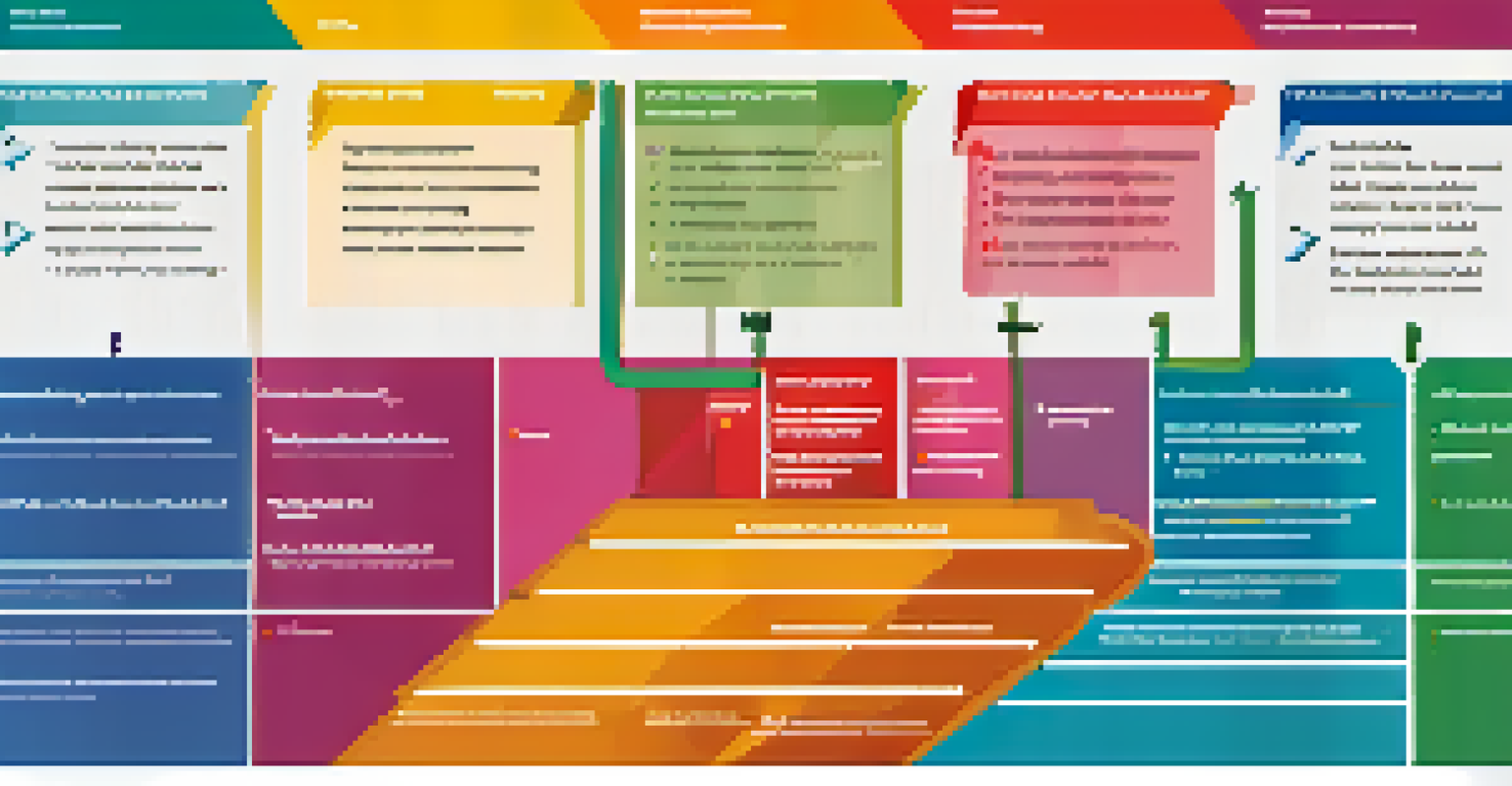How to Conduct an Accessibility Needs Assessment

Understanding the Importance of Accessibility Needs Assessment
Accessibility needs assessments are vital for creating inclusive environments. They help identify barriers faced by individuals with disabilities, ensuring everyone has equal access. By understanding these needs, organizations can implement strategies that enhance user experience and compliance with legal standards.
Accessibility allows us to tap into everyone's potential.
Moreover, accessibility isn't just about meeting regulations; it's about fostering a culture of inclusion. When individuals feel welcomed and accommodated, it enhances their engagement and satisfaction. This not only benefits users but also reflects positively on the organization’s reputation.
Ultimately, conducting a thorough needs assessment is the first step toward a more accessible world. By prioritizing accessibility, organizations can open doors for everyone, allowing diverse perspectives to thrive and contributing to a richer community experience.
Identifying Stakeholders for Your Assessment Process
The first step in conducting an effective accessibility needs assessment is to identify key stakeholders. This includes individuals with disabilities, advocacy groups, employees, and customers who can provide invaluable insights. Engaging a diverse group ensures that multiple perspectives are considered, leading to a more comprehensive assessment.

Incorporating feedback from people with lived experiences is particularly crucial. They can highlight specific challenges and barriers that may not be immediately apparent to others. By actively listening to these voices, organizations can better understand the real-world implications of their accessibility efforts.
Importance of Accessibility Assessments
Accessibility needs assessments are crucial for identifying barriers and fostering an inclusive environment for individuals with disabilities.
Additionally, collaborating with experts in accessibility can provide guidance throughout the assessment. These professionals can offer best practices and help identify areas that need attention, ensuring a well-rounded approach to your assessment.
Gathering Data: Methods and Tools for Assessment
Once you’ve identified your stakeholders, the next step is gathering data. This can be achieved through surveys, interviews, and focus groups. Each method can yield different insights, so using a combination will give you a more holistic view of accessibility needs.
Inclusion is not a matter of political correctness. It is the key to growth.
Surveys can reach a larger audience and provide quantifiable data, while interviews can delve deeper into personal experiences. Focus groups encourage discussion and can reveal the nuances of accessibility that might be overlooked in other formats. It’s all about finding the right balance.
Don't forget to utilize digital accessibility evaluation tools. These tools can help assess online platforms for compliance with accessibility standards, offering a technical perspective that complements qualitative data. By combining these methods, you get a well-rounded understanding of the accessibility landscape.
Analyzing the Collected Data for Insights
After gathering data, the next crucial step is analysis. This involves reviewing the information to identify patterns, trends, and areas of concern. Look for common barriers mentioned by stakeholders, as these can highlight priority areas for improvement.
Using qualitative analysis techniques can help in understanding the context behind the data. For instance, thematic analysis can help categorize feedback into broader themes, making it easier to visualize the main issues faced by users. This step is essential for translating raw data into actionable insights.
Engaging Stakeholders for Insights
Involving individuals with disabilities and advocacy groups ensures diverse perspectives are considered in the assessment process.
Moreover, consider creating visual representations of the data, such as charts or infographics. These tools can make the findings more accessible to stakeholders and help communicate the necessary changes effectively. The goal is to ensure that everyone involved understands the current accessibility landscape and the steps needed for improvement.
Setting Priorities: What Needs Immediate Attention?
With a clear analysis in hand, it’s time to prioritize the identified issues. Not all barriers will have the same level of impact, so assessing urgency and feasibility is key. Focus on areas that significantly hinder accessibility or those that can be addressed with minimal effort.
Creating a prioritization matrix can be a helpful tool in this stage. By classifying issues based on their impact and ease of implementation, you can clearly see what needs immediate attention. This method ensures that resources are allocated effectively and that the most pressing concerns are addressed first.
Additionally, involve stakeholders in this prioritization process. Their input can provide further clarity on which barriers are most detrimental to their experience. This collaborative approach not only fosters buy-in but also ensures that the most critical needs are met promptly.
Developing an Action Plan to Address Accessibility Needs
After prioritizing accessibility issues, the next step is developing a clear action plan. This plan should outline specific strategies, timelines, and responsible parties for each identified issue. By having a structured approach, organizations can systematically address accessibility barriers.
Incorporate measurable goals into your action plan to track progress over time. This could include timelines for implementing changes or metrics for assessing improvement. Clear goals not only provide direction but also motivate teams to stay committed to enhancing accessibility.
Action Plans for Accessibility Issues
Developing a clear action plan with measurable goals helps organizations systematically address and improve accessibility barriers.
Finally, ensure the action plan is flexible. As new needs arise or circumstances change, being adaptable will allow organizations to respond effectively. An ongoing commitment to accessibility will create a culture that values inclusion and continuous improvement.
Communicating Your Findings and Action Steps
Once the action plan is in place, it’s essential to communicate your findings and steps to all stakeholders. Transparency builds trust and keeps everyone informed about the organization’s commitment to accessibility. Consider hosting meetings or creating informative reports to share progress.
Incorporating storytelling can be an effective way to convey the importance of these changes. Share anecdotes from individuals who have faced barriers and highlight how the planned actions will make a difference. Personal stories can resonate deeply and underscore the need for accessibility improvements.

Lastly, encourage feedback on the proposed plan. Engaging stakeholders in the discussion can lead to further refinements and a stronger commitment to the initiative. Open communication fosters a collaborative spirit, making everyone feel invested in creating an accessible environment.